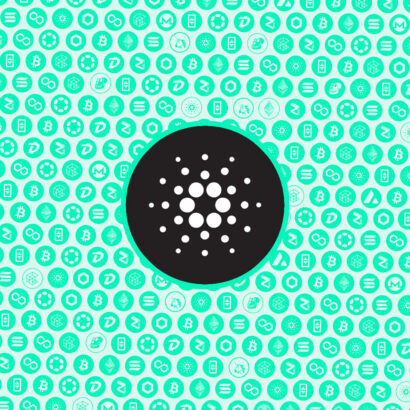Polygon acts as a Layer-2 sidechain to help Ethereum grow and emerge as a new platform for DeFi and NFTs.
Polygon also expands into the burgeoning crypto-gaming ecosystem and proves effective for sending micropayments.
The Problem:
Ethereum is Inefficient and Expensive!
Ethereum pioneered the functional blockchain, allowing users to do more than send or receive payments. However, the additions of DeFi, NFTs, and gaming caused congestion on the blockchain. That means that transaction fees, called Gas, go up. They may exceed the cost of certain transactions.
Buying or minting an NFT ignites “Gas wars” where people offer more and more Gas to have their transaction go through.
The Solution:
A Layer-2 Sidechain
Enter Polygon
Polygon (originally MATIC Network) was created to make Ethereum easier to scale and use. Polygon is a layer two blockchain built upon the Ethereum blockchain. It can process payments and transactions quickly and securely from Ethereum, later connecting and communicating these transactions to the main blockchain. How does this solve different problems on the Ethereum blockchain?
Small payments
Sending Ethereum or paying for small goods like coffee is prohibitively expensive due to transaction fees (Gas).Imagine your Starbucks order being $50 more expensive.
Polygon allows these transactions to go through quickly while charging almost negligible transaction fees.
Rolling out DeFi markets and financial integration
Polygon has partnered with the Dharma Protocol to index a wallet’s transaction history to determine credit limits for lending. The Dharma wallet may also connect directly to your bank, allowing you to swap fiat directly for cryptocurrency, or participate in Defi markets.
NFT-Based Gaming
Any games using resources from the blockchain involve multiple interactions with smart contracts, which in this use-case are the algorithms that determine the rules and victors within a game. With the current state of Ethereum gas fees, play-to-earn gaming would struggle to survive as it would price out many users.
Polygon allows for faster, cheaper transactions that benefit gaming developers and users alike. Rather than spending $20 per transaction within the game, the cost may end up being less than $0.10. In addition, it also makes it a lot easier for users to swap NFT items within the game or buy/sell on a marketplace like OpenSea.
A Brief History of Polygon
Polygon’s founding team includes: Jayanti Kanani, Sandeep Nailwal, Anurag Arjun, and Mihailo Bjelic.
Kanani has previously worked with the Web3 Foundation to develop the Polkadot blockchain. In 2017, Polygon was first launched under Matic Network, a modular solution that helps Ethereum scale more efficiently.
For most of its lifetime, MATIC’s price remained below $0.01 as investors and developers waited to see proof of its effectiveness.
Upon its rebranding to Polygon back in February 2021 and the release of an even more ambitious mission to connect multiple different blockchains, MATIC hit a high of $2.45 in April of 2021 before coming back down to around $1.10 per token by September of 2021.
By the beginning of 2022 MATIC hovered around $2. Midway through 2023 has MATIC sitting just outside the top 10 cryptos by market cap and weighing in closer to $1.
While there isn’t a set roadmap and timeline for Polygon’s future, it continues to roll out impressive partnerships.
Polygon processes more than 7 million transactions per day while maintaining much lower transaction fees than Ethereum.
How Does Polygon Work?
Polygon’s blockchain is called the MATIC Sidechain.
It has much of the same functionality as any other Proof-of-stake blockchain. Its blockchain lives atop Ethereum, processing transactions on the sidechain before batching and finally adding them onto the Ethereum blockchain.
Anything built on the Ethereum blockchain can also be adapted to the MATIC Sidechain.
Proof of Stake
Like many other popular blockchains, the side chain secures its transactions through Proof of Stake. Users delegate their MATIC tokens to a specific validator node; the more MATIC a node has, the more transactions it may be asked to validate. Once the node validates a transaction, this is broadcast over to other nodes that can double-check the work. If a fraudulent transaction is suggested, the node is penalized, losing its stake. If the transaction is verified, it is added onto the blockchain, and the validating node is awarded MATIC.
Milestones and Developmental Stages
Most of Polygon’s milestones and developments are relatively recent. It took years from its 2017 launch before this project would take off. In February 2021, the Matic Network was rebranded to Polygon, and as it achieved more adoption, the price rose from less than $0.03 in January 2021, hitting the $1 mark in May 2021 and reaching highs of more than $2.00 by the end of the month.
It is in the Top 20 of all cryptocurrencies by market cap (number 15 as of February 20220, with a market cap of over $13 billion. Roughly $6.8 billion of a total of $10 billion tokens have been issued thus far. Updated on CoinGecko
While its price (in early 2022) hovers around $2, plenty of partnerships and ongoing projects are happening on Polygon. In addition to the more than 400 dApps living on the blockchain, there are even more in the works.
- July 24th, 2021: Polygon launches an NFT game studio. Before launching their studio, several gaming projects, including Avegoc, ZED RUN, and SkyWeaver, opted to use Polygon for their development instead of Ethereum. No doubt, the studio may lead to continued investment and development on the blockchain.
- September 10th, 2021: Polygon integrates with Dharma wallet, allowing users to connect their bank accounts with the Polygon network. This makes it a lot easier for the average investor to participate in DeFi.
Buying and Storing MATIC
The easiest way to get into Polygon involves buying it from a trusted exchange. Crypto.com or Coinbase, or Newton are solid choices. More extensive exchanges may have higher fees, but they’ll often have proven track records and reliability.
Here’s a quick comparison:
Buying MATIC
| Newton | Coinbase | Crypto.com | |
| Ease-of-Use | ✔✔✔✔✔ | ✔✔✔✔✔ | ✔✔✔✔✔ |
| Trading Fees | None | Higher fees Fees vary depending on transaction |
Lower fees than Coinbase |
| Payment Methods | Interac e-transfer, Wire transfer |
Debit or Credit Card | Debit or Credit Card |
| Recurring Buys | No | Yes | Yes |
| Notes | Covers gas up to $5 (move to your wallet for free) | Offers the opportunity to earn various crypto for free through learning rewards | Promotion, when you join, waives fees for 30 days |
| Security & Reputation | Newton has partnered with Balance to provide institutional-grade storage.
FINTRAC #M19607029 |
Cold storage of assets Strong reputation and good track recordFDIC Insured |
Cold storage of assets Strong reputation and good track record FDIC Insured https://crypto.com/security |
Storing MATIC
After you purchase MATIC, you have a few options:
- Leave it on your trusted exchange (we like Kraken but still wouldn’t leave it there tbh)
- Move it into a Private Self-custody Wallet (Exodus is our top pick)
Note:
Your private wallet can come in one of two flavours:
Cold wallets, which are physical devices that are disconnected from the internet, and Hot wallets which are apps or browser extensions that have network access.
Cold wallets are ideal for long-term storage. (consider the Ledger Nano X)
If you’re going to be using MATIC for gaming or regular transactions, it makes more sense to keep some of it in a hot wallet so you can more easily interact with dApps and blockchain games.
| Hot Wallet | Cold Wallet | Crypto Exchange | |||
| Wallet | Exodus | MetaMask | Ledger | Trezor | Kraken |
| Supported Platforms | Desktop, Mobile App |
Browser extension, Mobile App | Ledger Live Desktop, Mobile App |
Trezor suite Desktop, Mobile App |
Mobile app |
| Setup | Instant | Instant | 10-15 min | 10-15 min | 10-15 min |
| Non- Custodial / Private |
Yes | Yes | Yes | Yes | No |
| Staking MATIC | No | No | Yes | Yes | Yes |
The Case for Investing in Polygon
Back in 2021, the price of Polygon skyrocketed from a few cents to more than $1.00.
Polygon provides transactions that are significantly faster and cheaper than Ethereum. It’s secure scalable and makes it easier to use the Ethereum ecosystem. Polygon may move to connect many other blockchains to the network in the future.
Disadvantages of Polygon
Some investors speculate that there isn’t a lot of room for the price of Polygon to balloon and that the entire crypto market cap will have to grow in order to pull the price of MATIC with it. It is competing with many other blockchains like Polkadot, who have similar goals. Lastly, with a maximal issuance of 10 billion tokens, it is unlikely that the price will skyrocket as the market cap of all cryptocurrencies is somewhere in the $2 trillion ballpark.
Staking $MATIC
One of the most popular protocols in use today, Polygon PoS is still expanding. By staking MATIC, investors have a chance to actively contribute to the development of Polygon in particular and Web3 technology in general.
As of July 30th, 2022, the Polygon Validator ecosystem was home to more than 2.6 billion MATIC, with a market value of over $2.5 billion. The overall awards given to validators total more than 593 million MATIC, or more than $560 million.
Here are a few more good reasons to stake your MATIC:
Platform Growth and Opportunities
The number one reason for staking MATIC on the Polygon network has to be the platform’s phenomenal growth.
Since the implementation of the staking incentive system on the Polygon network roughly three-and-a-half years ago, the number of decentralized apps running on the Polygon PoS network without the need for direct support from Polygon has increased by over 19,000 times.
Web3 projects like Aave, Uniswap, and OpenSea, as well as well-known companies like Meta, Stripe, and Adobe, are now housed under Polygon. An ecosystem of validators that supports it all works to ensure the chain’s stability by confirming the legitimacy and authenticity of transactions.
A Vibrant Validator Community
Although there is a limit of 100 validator nodes, anyone can help secure the network by delegating. There are currently 15,476 delegators, and counting, who select validators to stake on their behalf.
The Polygon PoS network would go one step closer to becoming totally permissionless if the validator community could agree on a formal procedure for the replacement of underperforming validators. During the next 12 to 18 months, there could be significantly more development in the decentralization of the Polygon PoS network, according to its website.
Impressive Rewards
Staking payouts are funded with 12% of the entire supply of 10 billion MATIC. You establish your own commission as a validator when accepting delegates to your node. There are yearly rewards available on top of this.
Sustainable Staking
The environmental impact of crypto staking is reduced with MATIC because each node uses just 546.07 kWh annually.
The Bottom Line
Polygon aims to make it easier for people to use Ethereum without paying exorbitant transaction fees. This is a valuable use case. It acts as a sidechain, securely processing more transactions than Ethereum at a much lower cost; this has led many NFT and blockchain game developers to work on Polygon as opposed to Ethereum. In addition, this infrastructure makes it feasible that people may use Polygon for making micropayments.
While there isn’t an explicit roadmap for the future, Polygon has executed important partnerships over the past few years and already boasts 100s of dApps.
No one can predict how high the price of MATIC may rise, but it is worth considering especially as Ethereum Gas fees remain high and crypto gaming continues to grow.
It might also be an opportunity to diversify your crypto portfolio.
Opinions information and ideas, not advice.




